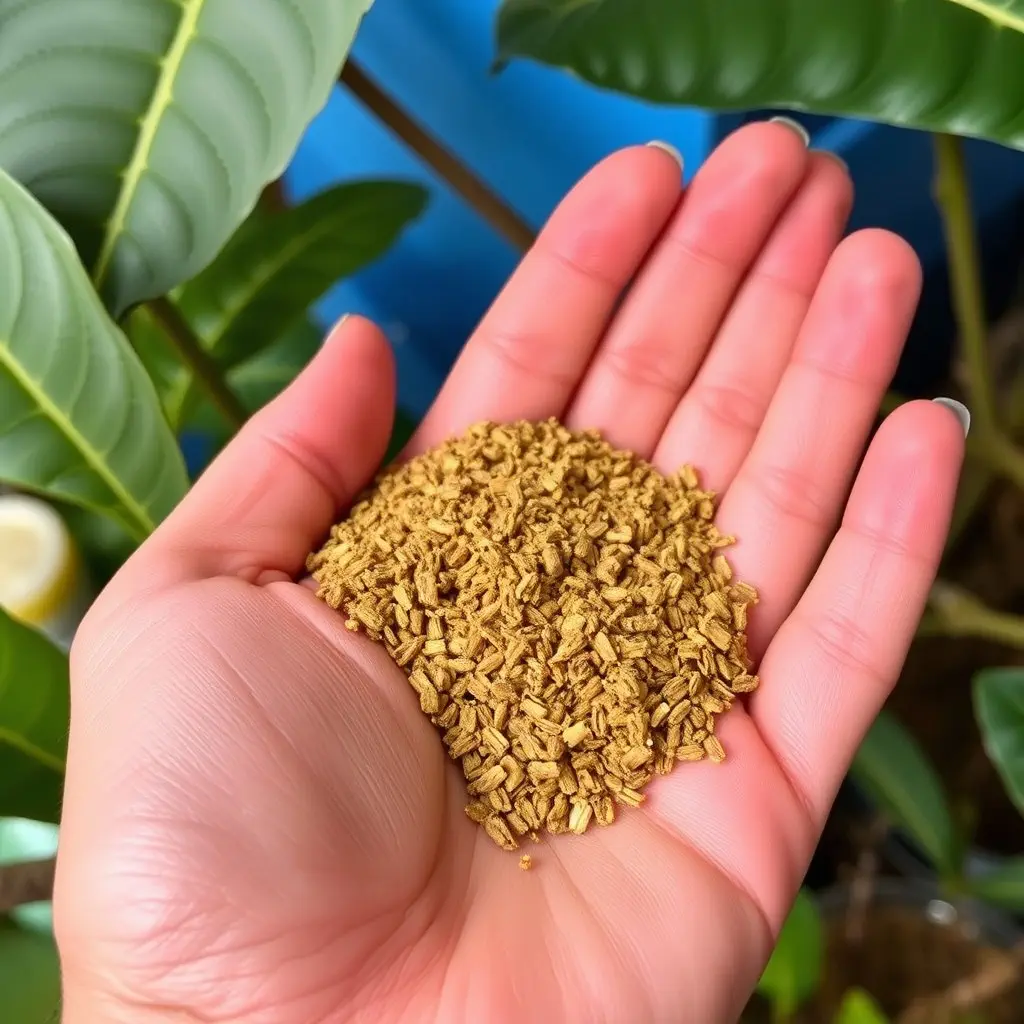Kratom, specifically its leaves containing the alkaloids mitragynine and 7-hydroxymitragynine, has been used for centuries by Southeast Asian cultures for pain relief. This traditional remedy has evolved into modern practices, including the preparation of Egyptian flower tea, which combines ground kratom leaves with hot water to create a potent natural analgesic. The tea's historical significance and its anecdotal efficacy over generations in managing mild to moderate pain make it a noteworthy option for holistic pain management, especially given the current interest in natural remedies. While the full scope of kratom's pharmacological effects is still being researched, its interaction with opioid receptors offers a potential alternative to traditional opioids. The Egyptian flower tea preparation is highlighted for its precise dosing capabilities and potential inclusion in a comprehensive health regimen that includes exercise, diet, and adequate sleep. Users are advised to consult healthcare providers and be cautious of potential interactions with other substances while using kratom responsibly as part of their pain management approach.
Exploring the ancient roots and contemporary applications of natural remedies, this article delves into the potential of kratom supplements for pain management. Traditionally revered in Egyptian culture, the use of kratom—known colloquially as Egyptian flower tea—has been passed down through generations. We will uncover its historical significance and scientifically examine how Mitragyna speciosa, the botanical name for kratom, offers analgesic properties. Furthermore, we provide guidance on integrating this supplement into your wellness regimen to harness its benefits safely and effectively, ensuring a holistic approach to alleviating pain.
- Exploring the Traditional Use of Kratom for Pain Relief: A Glimpse into the Egyptian Flower Tea Legacy
- Understanding Mitragyna Speciosa: The Science Behind Kratom's Analgesic Properties
- Integrating Kratom Supplements into a Natural Pain Management Routine Safely and Effectively
Exploring the Traditional Use of Kratom for Pain Relief: A Glimpse into the Egyptian Flower Tea Legacy

Kratom, a tropical deciduous tree native to Southeast Asia, has long been recognized for its medicinal properties, particularly in pain management. The traditional use of kratom leaves dates back centuries, with historical accounts suggesting its employment by local populations for alleviating discomfort and enhancing physical endurance. This ancient application of kratom has evolved into various modern consumption methods, including the preparation of what is known as Egyptian flower tea. This tea is a potent infusion that captures the essence of ground kratom leaves steeped in hot water, offering a beverage that not only carries the rich history of its origins but also provides potential relief from pain.
The legacy of Egyptian flower tea is deeply rooted in traditional practices, where it was often used by workers to combat fatigue and pain due to physical exertion. The tea’s efficacy in managing mild to moderate pain has been anecdotally reported over generations, attributing to its alkaloid content, namely mitragynine and 7-hydroxymitragynine, which are believed to interact with the body’s opioid receptors. Today, this herbal remedy is gaining recognition for its potential as a natural pain management alternative, with ongoing research exploring its pharmacological effects and safety profiles. As interest in holistic and plant-based treatments continues to rise, Egyptian flower tea remains a testament to the enduring wisdom of traditional medicine, offering a historical yet relevant approach to managing discomfort in contemporary times.
Understanding Mitragyna Speciosa: The Science Behind Kratom's Analgesic Properties

Mitragyna speciosa, commonly known as kratom, has been a subject of considerable scientific interest due to its diverse pharmacological effects, with particular attention on its analgesic properties. This tropical evergreen tree native to Southeast Asia and traditionally used in areas like Thailand and Malaysia, where it’s even consumed as an herbal tea known as kratom or Thai Stick, has garnered attention for its potential therapeutic uses. The leaves of the plant contain alkaloids that interact with the body’s opioid receptors, providing pain relief. Among these alkaloids, mitragynine and 7-hydroxymitragynine are two key compounds responsible for kratom’s analgesic effects. These compounds can modulate pain signaling by binding to mu, delta, and kappa opioid receptors, offering a natural alternative for managing chronic pain without the risks associated with opioid medications.
Furthermore, the scientific community has been exploring the mechanisms behind kratom’s analgesic properties through various studies. These investigations aim to understand how kratom can influence neurotransmitter systems such as dopamine and serotonin, which also play a role in mood regulation. This dual action of pain relief and mood enhancement might contribute to the plant’s traditional use not only as an analgesic but also as a mood elevator, as reflected in its historical use for energy enhancement and as a component in Egyptian flower tea preparations. The complexity of kratom’s pharmacology continues to be unraveled, offering insights into its potential therapeutic roles and the need for further research to clarify its efficacy and safety profiles.
Integrating Kratom Supplements into a Natural Pain Management Routine Safely and Effectively

Kratom, derived from the leaves of the Mitragyna speciosa tree native to Southeast Asia, has garnered attention as a natural supplement for pain management. When considering its integration into a pain routine, it’s crucial to approach its use with both caution and knowledge. The traditional preparation of kratom leaves is in the form of tea, often referred to as Egyptian flower tea, which allows for more precise dosing compared to dried leaf consumption. This method of ingestion can be a part of a holistic pain management strategy, providing relief for various types of pain, including chronic and acute conditions.
To safely and effectively incorporate kratom supplements into your natural pain management routine, it’s important to start with a low dosage to gauge individual sensitivity. Regular monitoring of the effects and consulting with a healthcare provider are essential practices to ensure safety and effectiveness. Additionally, it’s advisable to combine kratom use with other complementary therapies such as physical exercise, proper nutrition, and adequate sleep to create a comprehensive approach to pain relief. The Egyptian flower tea preparation should be done with care, adhering to the recommended dosages and being mindful of potential interactions with medications or other supplements you may be taking. By approaching kratom use thoughtfully and in harmony with natural wellness practices, individuals can explore this alternative remedy as part of their pain management toolkit.
In recent years, the natural pain management landscape has been enriched by the rediscovery of kratom, a botanical ally traceable back to its traditional use in Egyptian flower tea. This article has delved into the multifaceted role of Mitragyna speciosa, commonly known as kratom, offering readers a comprehensive understanding of its analgesic properties through both historical and scientific perspectives. It is evident that when integrated into a pain management routine with caution and guidance, kratom supplements can serve as a valuable addition to one’s wellness regimen. As we continue to explore the potential benefits and responsible use of such natural remedies, it remains crucial for individuals to consult healthcare professionals before making any changes to their treatment plans. The insights gained from this exploration underscore the importance of embracing the wisdom of traditional practices while advancing our scientific understanding for improved health outcomes.






